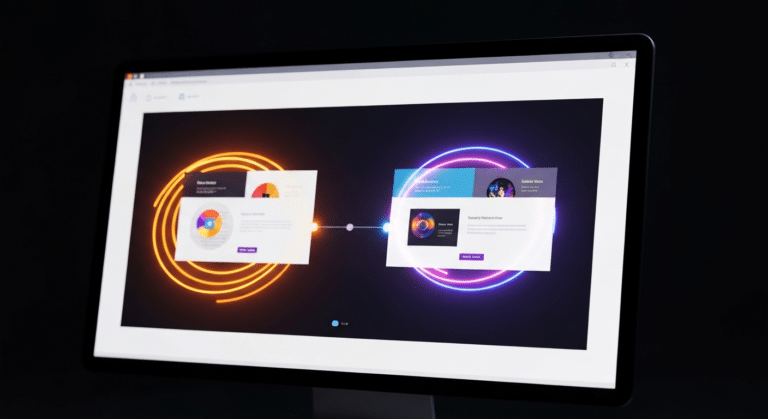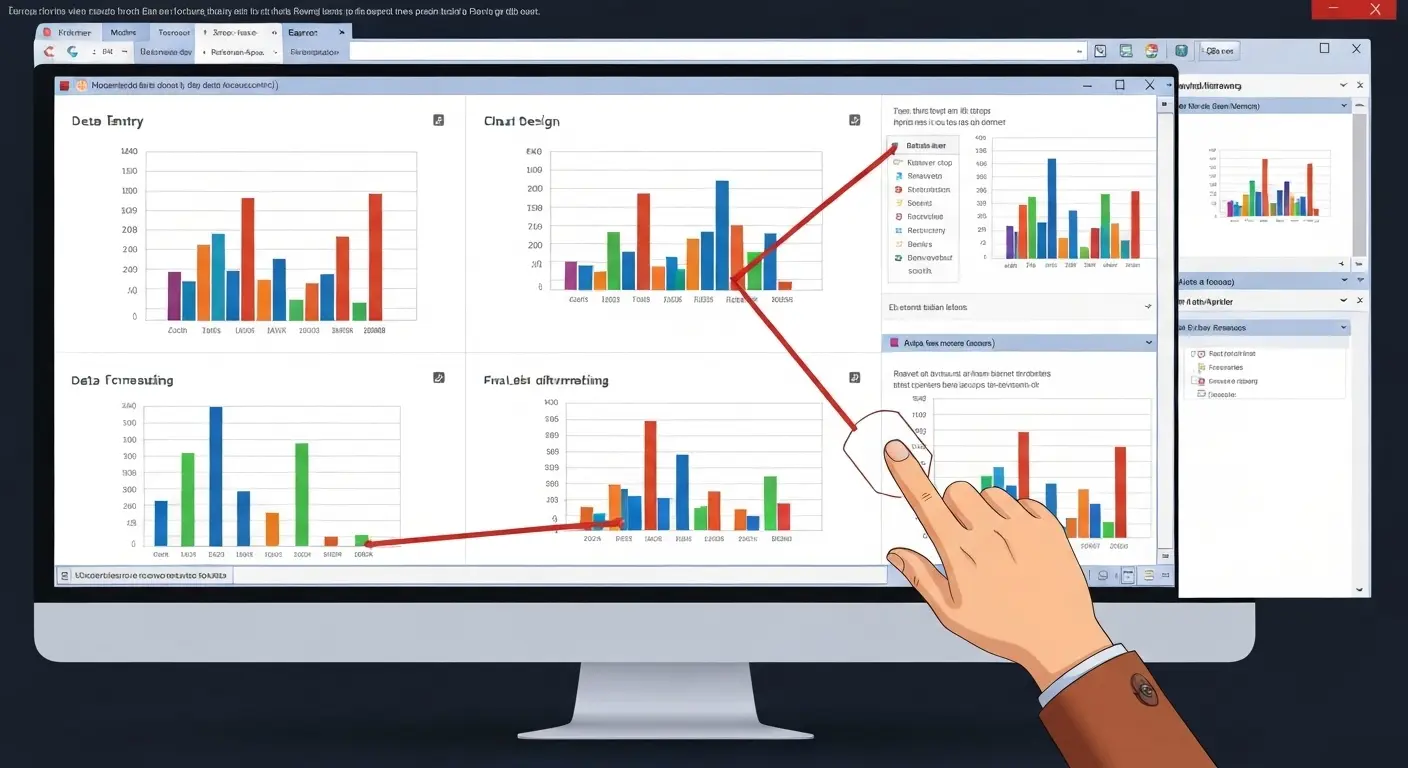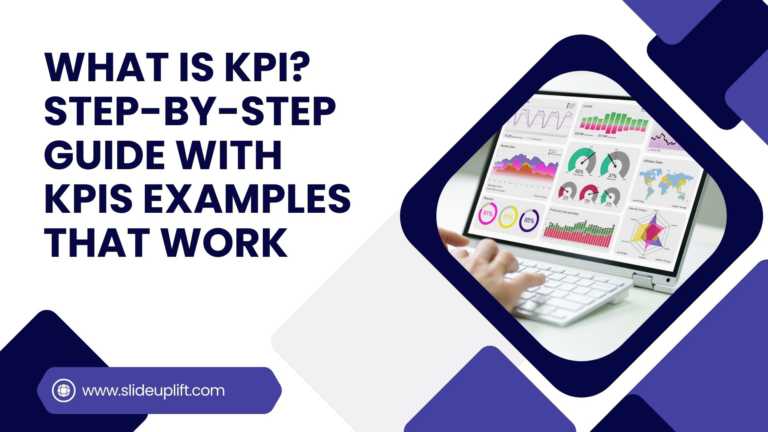What is Quarterly Business Review (QBR): A Complete Guide with QBR Examples and Tips
A Quarterly Business Review (QBR) is an important meeting where key stakeholders talk about how the business has done in the last quarter. They review goals, KPIs, successes, and where they can improve. This practice helps everyone focus on the future growth and success of the business.
Defining QBR in the context of business strategy
A QBR is very important for business strategy. It keeps everyone focused on common goals. A QBR connects the work done to the main goals and objectives of the business.
When done well, QBRs are not just updates. They become important discussions. This change helps us create a stronger partnership and adds more value for everyone.
Insights from a QBR can guide future business plans. This lets companies make good decisions based on data. As a result, they can grow and achieve customer success. This kind of thinking helps businesses stay quick and ready for changes in the market and what customers need.
Key components of a typical QBR
A typical QBR has several parts that thoroughly check the state of the business.
Retrospective Nature:
It begins by reviewing what occurred in the last quarter. The QBR examines the progress on metrics and KPIs. This shows us what is working well and what needs more focus.
Forward Looking:
This section of QBR looks ahead. It outlines goals and action items for the next quarter. We might also talk about challenges we could face. A clear plan for the next quarter is important. This plan should show who is in charge of each task and when it is due.
The way QBR is organized allows for new ideas and planning. This helps businesses adapt when they need to and take advantage of new opportunities. The insights gained from QBRs help companies to refine their strategies and make better decisions. This leads to growth and benefits their clients’ success.
Aligning teams towards common business goals
Quarterly Business Reviews (QBRs) bring together all the stakeholders. These meetings help track how close we are to our goals. The discussion helps improve teamwork, encourages collaboration, and quickly solves any challenges. QBRs support open communication. They also find roadblocks early and help everyone grow by making sure we work towards shared objectives.
Identifying areas for improvement and action plans
Constructive feedback is really important for any business that wants to improve. Quarterly Business Reviews (QBRs) are a great way to get this feedback. A clear format helps create open and honest discussions about how the business can enhance its services. When they spot areas that need improvement, QBRs help make clear action plans. These plans should include specific action items, who will take care of them, and when they must be done. By outlining the next steps, QBRs ensure everyone takes on responsibility. This can turn feedback into real changes. Finding ways to improve and forming plans to act is key for businesses. This helps them provide better services, boost customer satisfaction, and grow over time. Companies can build better connections and become trustworthy partners by accepting feedback and participating in this ongoing improvement.
Different Quarterly Business Review (QBR) Examples
1. Internal QBR
- What is it?
An Internal QBR is a detailed review of how well the company is performing against its internal goals. It examines department progress, operational challenges, team performance, and process efficiency. These reviews help leaders understand what is working, where delays exist, and which areas need improvement to achieve long-term targets. - Who uses it?
Executive leadership, department heads, project owners, and cross-functional teams who need alignment on goals and priorities. - When is it used?
Quarterly or before major planning cycles. It is used when teams need clarity on performance, alignment, and strategic direction. - Key KPIs tracked?
Department performance metrics, efficiency ratios, resource utilization, project progress, team productivity, and process bottlenecks.
2. External / Client QBR
- What is it?
An External or Client QBR presents results, outcomes, and business value delivered to clients. It reviews past performance, highlights successful initiatives, and sets future plans together. These meetings strengthen trust and encourage long-term partnerships. - Who uses it?
Customer Success teams, Account Managers, Sales teams, and key decision-makers on the client side. - When is it used?
Quarterly client check-ins, renewal or expansion cycles, end-of-project reviews, or milestone completions. - Key KPIs tracked?
Customer satisfaction, ROI delivered, product adoption, engagement levels, support trends, and delivery performance.
3. Project-Based QBR
- What is it?
A Project-Based QBR reviews ongoing project status in depth. It highlights milestones met, risks identified, blockers, and upcoming tasks. The goal is to ensure transparency and keep teams aligned, especially in complex or long-running projects. - Who uses it?
Project Managers, PMOs, engineering teams, operations leads, and project sponsors. - When is it used?
During mid-project reviews, high-impact initiatives, long-term programs, or any project needing regular progress checks. - Key KPIs tracked?
Milestone completion, budget burn, timeline accuracy, risk level, resource usage, workload distribution, and quality performance.
4. Financial Performance QBR
- What is it?
A Financial Performance QBR gives a full view of the company’s financial health. It analyzes revenue trends, expenses, profitability, financial risks, and forecast accuracy. This helps leaders make informed decisions on investments, budgeting, and cost control. - Who uses it?
Finance teams, CFOs, senior executives, investors, and department leaders. - When is it used?
Quarter-end reporting, board meetings, budgeting cycles, or strategic planning sessions. - Key KPIs tracked?
Revenue, expenses, margin performance, ROI, quarter-over-quarter growth, variance to budget, forecast reliability.
5. Customer Success QBR
- What is it?
A Customer Success QBR focuses on customer outcomes, product adoption, and long-term relationship health. It evaluates how the client uses the product, what value they gain, and what support or improvements they need next. These reviews help reduce churn and uncover expansion opportunities. - Who uses it?
Customer Success Managers, Account Managers, onboarding specialists, and client-side executives. - When is it used?
Quarterly check-ins, renewal discussions, onboarding stages, or when customer health shows risk. - Key KPIs tracked?
Customer health score, product usage depth, NPS, retention rate, feature adoption, support volume, and expansion potential.
Comprehensive Comparison of Key QBR Types for Business Reviews
The table below gives a quick side-by-side view of each QBR type, showing what it covers, who uses it, and the key metrics reviewed.
| QBR Type | What It Is | Who Uses It | When Used | Key KPIs |
| Internal QBR | Reviews internal performance and operational efficiency. | Executives, dept heads, project owners. | Quarterly or pre-planning. | Dept metrics, efficiency, resource use, progress, bottlenecks. |
| External / Client QBR | Shows value delivered to clients and future plans. | CSMs, Account Managers, Sales, and clients. | Quarterly check-ins, renewals. | CSAT, ROI, adoption, engagement, support trends. |
| Project-Based QBR | Deep dive into project status and risks. | PMs, PMOs, engineering, sponsors. | Mid-project or long programs. | Milestones, budget burn, timelines, risks, resources. |
| Financial QBR | Reviews financial health and forecast accuracy. | Finance teams, CFOs, executives. | Quarter-end, boards, budgeting. | Revenue, expenses, margins, ROI, variance. |
| Customer Success QBR | Tracks customer outcomes, adoption, and health. | CSMs, Account Managers, and onboarding teams. | Quarterly or renewals. | Health score, usage, NPS, retention, adoption. |
This comparison makes it easy to choose the QBR format that best fits your review needs and goals.
Essential Elements of QBR Presentations
Making a strong Quarterly business review presentation PPT is important for businesses. They help display value, connect with stakeholders, and reach goals during quarterly reviews. These presentations should not just present data but also tell a story that hooks the audience.
Focusing on clarity, having a good look, and using simple messages makes it easier to understand and remember information. Adding these key parts can turn Quarterly business review PPT from dull reports into engaging stories. This helps businesses show their value, create strong connections, and support growth.
Data and metrics to include
- When you plan for your QBR, think about who will attend and what you want to achieve.
- Pick metrics that the audience can relate to.
- Show how you are working towards shared goals.
- Once you choose the right data, present it clearly and in an attractive manner with a structured QBR PowerPoint presentation.
- Don’t confuse your audience with too many numbers.
- Share key insights and useful points they can actually use.
- Explain what the data means and how it leads to real results.
- Use graphs, charts, and other visuals to make the information clearer and more engaging using the correct Quarterly Business Review Template.
- QBRs are not just about past events.
- They also look at what we can do in the future.
- By choosing and explaining your data and metrics thoughtfully, your QBR presentation can help achieve your strategic goals.
Strategic goals and progress updates
- A key part of a good QBR presentation is checking on strategic goals and sharing clear updates on progress.
- By showing the strategic goals set at the start of the partnership or in past QBRs, you make a clear path for the discussion with the help of a good QBR PowerPoint template.
- These goals help everyone focus on what truly matters in the long run.
- When you give progress updates, be honest and clear.
- Point out what you have achieved and celebrate important milestones.
- Also, recognize any goals that weren’t fully met.
- Use metrics and data to support these updates.
- Show what has been done whenever you can.
- Share any challenges you faced using the structured QBR slide template.
- Talk about how you solved these problems and the changes you made to your original plan.
- Being honest about the good and the bad shows that you care about transparency.
- This helps create trust with your clients.
Preparing for a Successful QBR Presentation
Preparation is key to making QBRs useful and achieving good results. Start by gathering all the important information and presenting it in the Quarterly business review template PPT. Review notes from earlier meetings. Speak with others in your company who handle client relationships. This will let you hear their opinions and ideas.
Make sure to dedicate enough time to practice your presentation. This practice will help you present smoothly and feel more confident. When you prepare well for a Quarterly business review presentation, you can show your value, meet the client’s needs, and guide the discussion to achieve the results you want.
Steps to organize and plan a QBR
- To have a good QBR (Quarterly Business Review), you need a solid plan.
- Set a clear goal for the meeting. This could be getting opinions on a new product feature or bettering client relationships.
- Make a simple QBR agenda. List the topics, the time for each topic, and who will lead the discussions.
- Share the agenda with everyone before the meeting. This gives them time to prepare and gather any feedback.
- Use QBR presentation templates to help you create graphs, charts, and dashboards.
Conducting an Effective QBR Presentation
Having a good QBR is not just about sharing information. It is also about making a space where everyone can share their ideas and feel comfortable talking. When you have a clear and friendly atmosphere, people feel listened to and valued. This helps create a better and more successful QBR.
Using these methods in your QBR meetings can make them a great chance to build better relationships for your business. They help with alignment and can lead to the best results from your business partnerships.
Best practices for QBR presentation and discussion
- A good Quarterly business review presentation needs real facts, interesting stories, and strong skills.
- Start with a friendly tone that shows off the team.
- Clearly explain what the QBR is about.
- List the main topics to discuss and invite everyone to join.
- Use visuals like charts, graphs, and infographics to show important metrics.
- Share stories to connect with the audience.
- Encourage everyone to speak during the meeting.
- Ask questions that need more than a yes or no answer.
- Welcome feedback and listen to any concerns from attendees.
- Make the QBR feel like a team effort, not just a talk from one person.
Post-QBR Strategies
The time after the Quarterly business review presentation meeting is important. What you do now can greatly change the results. It’s essential to turn the ideas and agreements from the QBR into real actions. This will help achieve better outcomes.
It’s important to share the meeting notes quickly. You should also look at the action items. Using feedback in your business strategies shows that you want to get better. This can help you build better relationships with your clients, which is important for long-term success. After the QBR, take some time to feel energized. Inspire responsibility and bring positive change to your business and to your client’s business.
Follow-up actions after a QBR
To improve a QBR, you need to have clear next steps and make sure everyone is accountable. Begin by sending a brief and clear summary of the meeting within one or two days. This summary should include the main discussion points, decisions made, action items, who is responsible for each item, and their deadlines.
- Focus on your tasks based on how urgent and important they are.
- Use tools for project management or shared lists. These will help you track progress, deadlines, and any problems.
- Stay in touch with stakeholders about the status of action items.
- Provide updates, answer questions, and celebrate milestones as you achieve them.
- Good follow-up means being active and honest.
- Keep your communication clear and share updates regularly.
- Take responsibility for your tasks.
- This way, you can ensure the results of the QBR lead to important actions.
- This approach can help make your partnership more successful.
Measuring the impact of a QBR on business performance
- QBRs help you get better by reflecting on the past.
- Pay attention to data by choosing KPIs that match your QBR goals.
- Watch metrics over time to see trends or changes.
- Find connections between positive KPI changes and the actions taken in QBRs.
- Collect feedback from internal stakeholders and clients.
- Use data-driven ways to measure success and boost the impact of QBRs.
Conclusion
In conclusion, Quarterly Business Reviews (QBRs) are key for companies that want to grow and improve teamwork. They check performance regularly, link teams to strategic goals, and find ways to improve. QBRs encourage discussions that lead to results. You can have them track project progress inside your company or involve clients and stakeholders outside. A QBR keeps everyone informed, boosting accountability and commitment. It is important to remember that success goes beyond the meeting. It also includes what you do with the insights you gain. Using the right tools and following good practices can make these meetings very useful for your business. Hold QBRs often. They offer valuable chances for growth, change, and alignment. This can lead to more success for your business.
For teams looking to elevate their QBRs, using professionally designed templates can make preparation faster and presentations more impactful. Explore our QBR templates for both PowerPoint and Google Slides to simplify your planning and deliver sharper, more persuasive reviews.
FAQs
-
What is the ideal frequency for conducting QBRs?
The best time to have QBRs is once every three months. This is what “quarterly” means. Sticking to this plan helps the team move forward. It also reduces the number of meetings.
-
How long should a QBR last?
The best time for a QBR meeting is around 60 minutes. A shorter meeting keeps everyone interested. This helps everyone stay focused. As a result, the meeting becomes more productive.
-
Can QBRs be conducted virtually, and if so, how?
Yes, virtual QBRs are becoming more popular. Video conferencing tools, screen-sharing features, and presentation software make these meetings effective. This helps people work together and feel connected, no matter where they are.








































